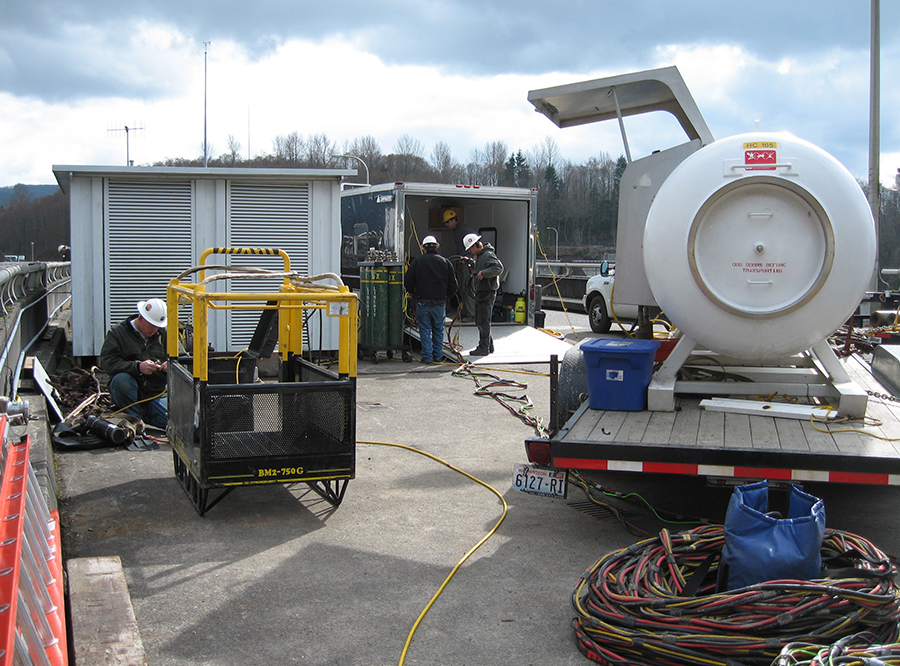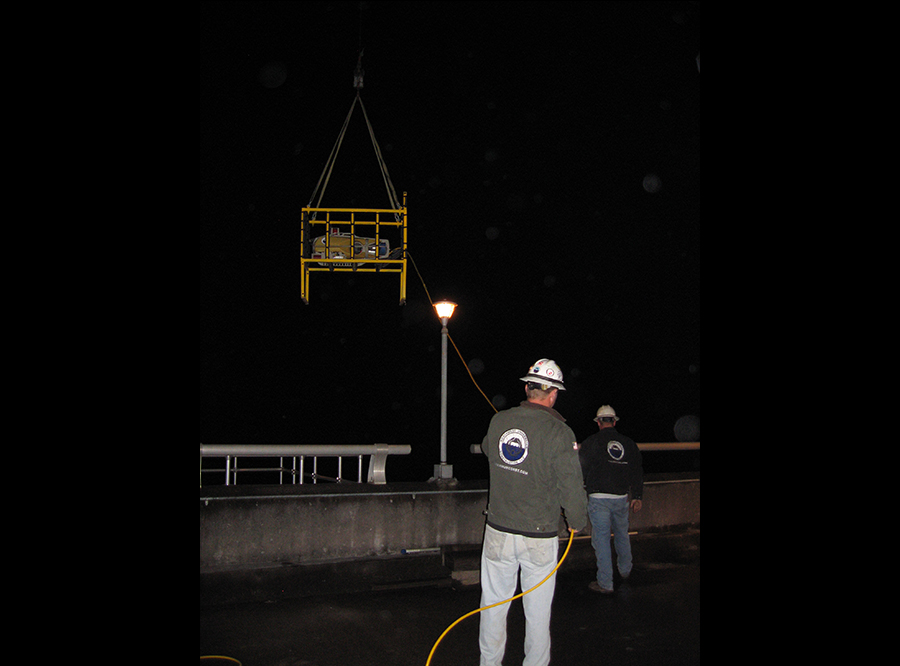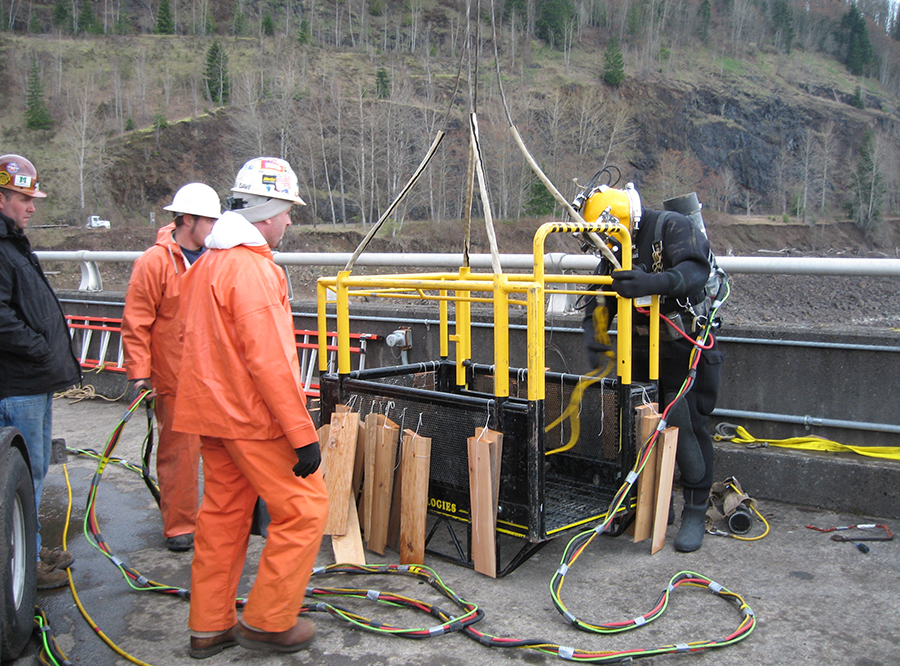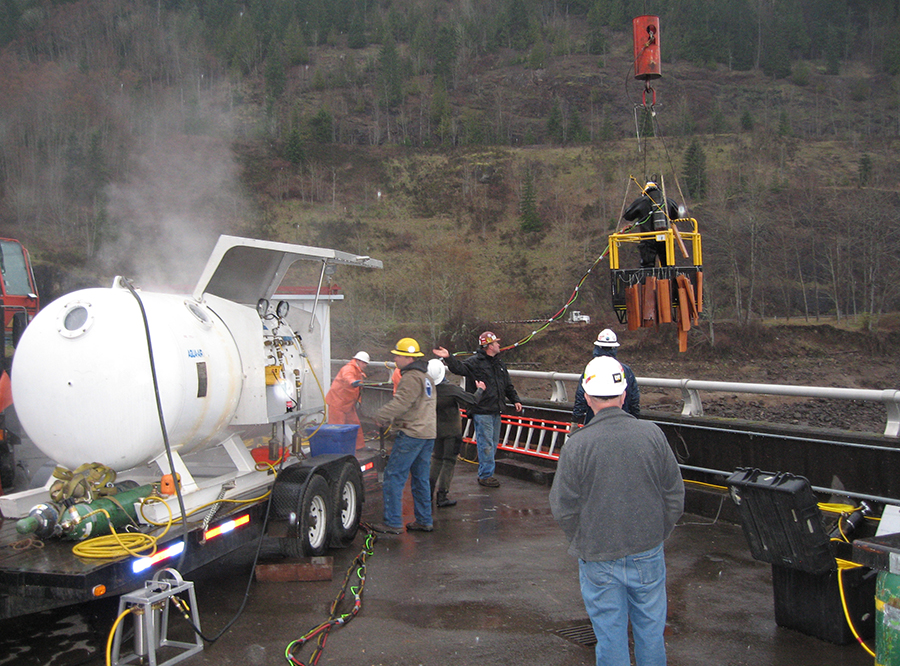ROV and Divers Working Together
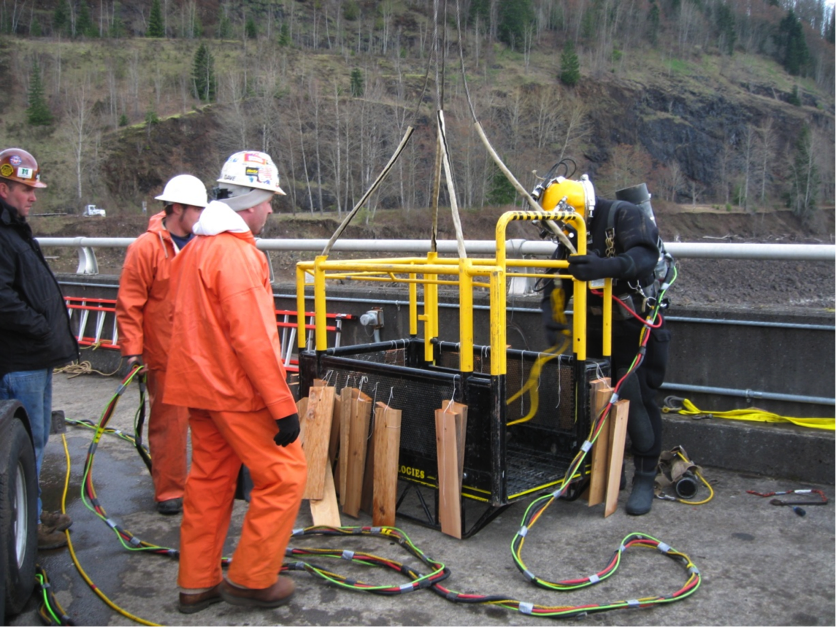 Diver Preparing for Dive
Diver Preparing for Dive
Hibbard Inshore provides a wide range of ROV services. Often the optimum solution for a task is to have divers and ROVs work together, and because of this Hibbard Inshore has performed many projects in conjunction with divers. ROVs have the advantage over divers in terms of nearly unlimited bottom time, lower risk and almost no depth limitation. Divers offer a higher degree of flexibility with tooling and manual tasks. By using both techniques in a single project, the advantages of each can be used to optimize the project. The optimization is achieved by using the unlimited bottom time of the ROV for inspection while a diver is preparing to dive or decompressing. Second, if there are hazards, known or unknown, the ROV is a safer method to quantify the hazards allowing the project team to design a safe and comprehensive dive plan.
One example where commercial divers and Hibbard Inshore’s ROVs increased productivity and safety by working together was a project where a high head dam had stop logs that were leaking. In this case the bottom stop log was at a depth of 190’, and the stop logs were installed to service the head gate of a hydroelectric intake. There were two known hazards of concern to the commercial dive team; one was the differential pressure hazard created by the leak and second was the discharge of air when the head gate was lowered into place. The discharge of air was created because the head gate sealed against the upstream face and was located downstream of the stop logs. The short passage between the two didn’t have any vents and therefore trapped a volume of air between the two structures and at depths from 120’ to 190’. When the head gate was lowered into place it sealed the air. The leaking stop logs allowed water to enter the space and pressurize the air until one of the stop logs’ seals allowed the air to escape. The resulting discharge created a very large air bubble that would rise to the surface, causing turbulence. This turbulence could take a diver or ROV rapidly to the surface, and presented a safety risk to divers as this rapid ascent from depth could cause serious health issues due to rapid decompression.
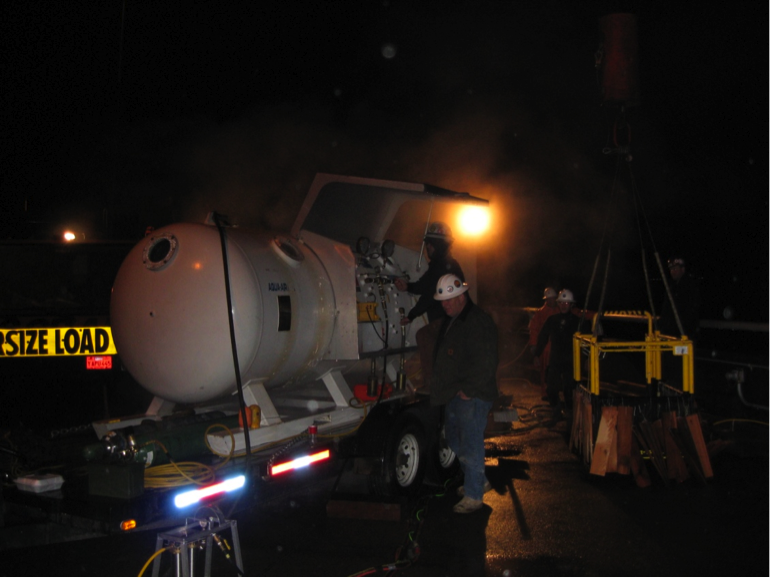 Diver Decompression Chamber
Diver Decompression Chamber
To quantify the worksite hazards and to attempt to locate the leak in the stop logs with the head gate raised, the initial inspection was performed by the ROV. The inspection plan was developed and closely followed so as not to get the ROV or tether caught in a significant leak. The ROV was able to locate the leak at the lower seal of the stop logs. The diver entered the water after the decompression chambers were setup, and the divers’ tooling was selected based on the ROV inspection. The diver descended to the work location and tested two different sealing techniques to stop the water flow. The bottom time of the diver at this depth was very limited as Mixed gas or Saturation diving wasn’t selected for the project based on cost. The diver would perform one task and return to the surface. While the diver was decompressing in a decompression chamber at the surface, the ROV was used to inspect the work to allow the dive supervisor to plan the next dive. Also, the head gate was cycled to test the temporary seals. Several dives were completed to perform all of the operations necessary to seal the stop logs.
The result of the collaboration between the ROV and diver was a successful and economical project in deep water with controlled risk to the diver.


